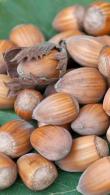Staphylea Pinnata or Common Bladder Nut
Large Deciduous Shrub with Ornamental Appeal across the Seasons
1. Add items to basket
2. Go to the basket
3. Enter your postcode in Delivery Price Check
Staphylea pinnata
Common Names: Common Bladder Nut, Anthony Nut
Staphylea pinnata, commonly known as the Common Bladder Nut, is a striking large deciduous shrub or small tree with ornamental appeal across several seasons. Renowned for its elegant foliage, fragrant late-spring flowers and unusual bladder-like fruit, this underused native European species brings both charm and curiosity to mixed borders, woodland settings, or naturalistic planting schemes. Hardy, graceful, and structurally impressive, Staphylea pinnata offers a distinctive alternative to more common flowering shrubs.
The Common Bladder Nut forms a vigorous, upright, multi-stemmed shrub that can, over time, develop into a small tree. Its dark green, pinnate leaves are divided into five to seven pointed, oval leaflets, giving the plant a soft, textural quality in spring and summer. In autumn, the foliage turns buttery yellow before leaf fall, extending its season of interest.
In late spring to early summer, Staphylea pinnata produces graceful, pendulous racemes of bell-shaped, white flowers, often delicately tinged with pink. These lightly fragrant blooms are rich in nectar and attract a wide range of pollinators. After flowering, the shrub develops its signature feature: clusters of pale green, inflated, papery seed capsules that resemble miniature lanterns or bladders, giving the plant its common name. These ripen to a straw-like colour and may persist into autumn, adding a unique textural element.
Native to Central and Southern Europe, Staphylea pinnata has a long history in traditional landscapes but remains underrepresented in UK gardens. It differs from its close relative Staphylea colchica (Ivory Flowered Bladdernut), which is smaller in stature and bears shorter, denser flower clusters. While S. colchica is often used for dense screening or informal hedging, Staphylea pinnata is better suited as a free-standing specimen, admired for its larger form, graceful flower panicles, and unusual bladder-like fruits.
Height and Width of Staphylea pinnata:
- Height: 4 to 5 metres
- Spread: 3 to 5 metres
Its naturally upright form and eventual size make it well-suited to larger gardens or to use as a focal point in looser planting schemes.
How Hardy is Staphylea pinnata?
Staphylea pinnata is fully hardy across the UK and continental Europe (RHS H6), tolerating temperatures down to -20°C or lower. Once established, it is robust, resilient to frost, and suitable for both sheltered and more exposed locations.
Uses in Garden and Landscape
Ideal for informal borders, woodland gardens, or naturalised planting, the Common Bladder Nut is especially effective in areas where its spring flowers and ornamental seed pods can be appreciated up close. Its light canopy and upright habit allow underplanting with shade-tolerant perennials or early spring bulbs. Although relatively uncommon in cultivation, it makes a fine architectural specimen for larger gardens or as part of a wildlife-friendly scheme.
Care Tips
Plant Staphylea pinnata in fertile, well-drained soil in full sun or partial shade. It prefers a sheltered position but can tolerate occasional exposure. Water regularly during its first few seasons and mulch annually to enrich the soil and retain moisture. Little pruning is required beyond removing any damaged or crossing stems in late winter or early spring.












